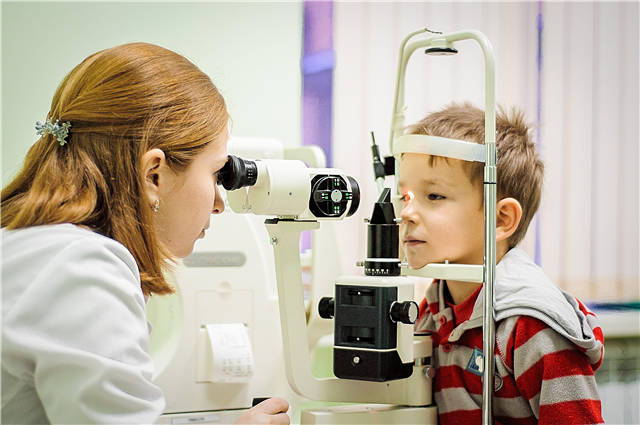Coprogram in the practice of a pediatrician
Stool analysis (coprogram) is an essential tool for studying diseases and the functioning of the digestive system. The study of feces gives an idea of the state of the liver, stomach, pancreas, small and large intestines. And, despite the fact that this analysis is less common in comparison with blood and urine tests, the results obtained show the doctor a detailed picture of the child's health, the etiology of gastrointestinal pathologies. This will allow the specialist to prescribe an effective treatment.
Why are children prescribed coprogram
Indications for research

Stool analysis for a coprogram is a mandatory study for children if they have signs of a functional disorder or pathological condition of the gastrointestinal tract:
- abdominal pain;
- heartburn, belching, nausea, a specific taste in the mouth, vomiting;
- flatulence, constipation, diarrhea;
- abnormal appearance of feces - color, odor, volume, presence of suspicious impurities;
- mucus, pus, blood on underwear;
- pain, itching in the rectum;
- suspicion of a neoplasm, helminthiasis, poisoning;
- allergies, intolerance to certain foods;
- significant, sudden weight loss with no identifiable cause.
What the analysis reveals
Coprogram allows you to detect:
- diseases of the gallbladder and bile ducts;
- pancreatic pathology;
- functional disorders of the liver;
- bowel disorders;
- stomach diseases;
- helminthiasis;
- celiac disease;
- cancers.
Training
This analysis does not require complex preparations, but in order to obtain the most objective result, certain rules should be followed.
Diet
Before taking a stool sample for a coprogram of a special diet, children with suspected bleeding in the gastrointestinal tract should adhere (during the study, the laboratory assistant performs special tests that allow to exclude or confirm the presence of blood cells in the feces).
Certain foods consumed by the child on the eve of the test may affect its result - the reaction to the detection of blood cells may turn out to be false positive.
When bleeding is suspected before the delivery of the material, the following products are prohibited for use:
- meat;
- a fish;
- green fruits and / or vegetables;
- iron-containing medicines;
- preparations containing bismuth and magnesium;
- medicines to improve digestion.
You can offer your child milk (no more than 1.5 liters), mashed potatoes and cereals for food.
On the day before the study, you should avoid trauma to the gums when brushing your teeth, since blood from the oral cavity can enter the gastrointestinal tract, which will distort the test result.
Feces collection container
Now you can buy a clean container for collecting material at any pharmacy. A special container is a sterile glass or plastic container with a lid and a spatula. If it is impossible to buy a container at a pharmacy, you can store the material in a small pre-washed and dried bottle.
There are accumulations of microorganisms on the walls of non-sterile, poorly prepared containers. This will distort the analysis results.

Collection of material
Required stool volume
For research, collect 3 - 5 cm 3 (approximately a teaspoon) of feces.
Stool collection procedure
Hands should be thoroughly washed and latex gloves should be worn before collecting stool from a child.
Place a polyethylene film under the rim of the toilet, then collect a sample of feces from it. Such a film can be used in the diaper of a baby who has not yet used the toilet. It is impossible to remove feces from the diaper for analysis, as it absorbs liquid.
It is unacceptable for urine to enter the removed feces, but if contamination occurs, the sample will have to be repeated. Collect the feces before touching the inside of the toilet.
You can not remove feces after a cleansing enema.
How to store and transport coprogram material
Experts recommend donating faeces "fresh". But when it is not possible to provide the material to the place of its research immediately, feces can be stored in a well-closed container at a temperature of +3 oС - + 5 oС for up to 8 hours.
It is best to carry the container in a cooler bag or thermal bag. If this is not possible, then the container should be wrapped in several layers of paper, and then wrapped in a towel, thick fabric is also suitable. However, the material must be delivered to the laboratory within 2 to 3 hours.
Why is the material not collected in the evening
It is not recommended to remove faeces for analysis in the evening, as most laboratories are closed and it will not be possible to immediately deliver feces for analysis. You will have to store the material until the morning, as a result of which the results are false.
Analysis period
The results of the research will be ready 5-6 days after the submission of the material. At this time, the laboratory assistant is engaged in microscopic and macroscopic examination of fecal masses, checks them for the presence of foreign matter, harmful microorganisms and other pathogenic elements.
Coprogram results
Normal indicators
Macroscopic examination
Assumes an assessment of physical properties. This is an important criterion for assessing the state of the gastrointestinal tract. During microscopic examination, color, density, shape, odor and distinguishable impurities are determined.
A healthy child has soft, dense, cylindrical stool containing scanty remnants of undigested (mainly vegetable) food. Feces have a characteristic mild odor, neutral or slightly alkaline reaction of the environment.
The color of feces is influenced by the nature of the food consumed.
| Colour | Diet type |
| Yellow, light shades of brown | Milk products |
| Dark brown | Meat |
| Brown green | Vegetable products |
| Brown red | Foods containing red pigment (watermelon, beets, carrots) |
| The black | Consumption of black berries and coffee |
Feces should be free of mucus, blood, worms and other parasites. The volume of feces is normally 100-200 g / day.
Microscopic examination
This study of feces provides information about the condition of the intestinal mucosa, as well as how effectively the digestive and motor functions of the stomach and intestines are performed, by microscopy, cells are identified that are separated into the intestinal lumen. This method allows you to detect blood cells (leukocytes, macrophages and erythrocytes), as well as study the state of intestinal epithelial cells and detect pathologically altered cancer cells.
In addition, identification of small lumps of mucus, worm eggs and unicellular parasites occurs.
Normally, small amounts of muscle fibers are found in a child's feces. The presence of indigestible coarse fiber in unchanged form is characteristic.
Children's feces should not contain:
- digestible fiber;
- starch;
- erythrocytes;
- cancer cells.
Sometimes a little soap and fats come to light. The presence of leukocytes is possible, but they should be single. Healthy intestinal microflora makes up about 40% of fecal matter.

Pathological indicators
When the external, macroscopic, microscopic characteristics of the stool are changed, this may indicate the presence of one or another disorder.
Stool volume
The amount of faeces may increase due to:
- gallstone disease, cholecystitis;
- enteritis;
- fermentative or putrefactive processes in the intestine;
- strengthening of intestinal peristalsis;
- pancreatitis.
The decrease in volume occurs mainly due to constipation.
Why does the shape and density of stool change
| Density and shape | Causes |
| Pencil, ribbon-like | Obstruction in the rectum: tumors, polyps, hemorrhoids, sphincter spasm |
| Liquid, mushy | Increased motility due to inadequate reabsorption of water by the mucous membrane, excessive secretion of mucus by the intestinal wall |
| "Sheep feces" | Persistent constipation, excess fluid absorption |
| Oily | Chronic pancreatitis, cholelithiasis, cholecystitis |
| Frothy | Fermentative dyspepsia |
Stool color
- The stool becomes discolored and grayish-white in color if the child has disturbances in the functioning of the liver and biliary tract (bile is either not formed, or due to congestion on the way of excretion, it does not enter the intestine), and also when stercobilin in the feces is sharply reduced. A decrease in its amount may indicate obstructive jaundice, cholelithiasis, cholangitis, pancreatitis, hepatitis.
- because of lesions of the pancreas and intestinal amyloidosis feces will be gray.
- About acceleration of intestinal motility, as well as inhibition of intestinal flora antibacterial drugs are indicated by golden yellow stools.
- Black feces are usually seen if there is bleeding in the upper gastrointestinal tractand red - with bleeding from the lower sections.
- Typhoid fever is indicated by a stool similar to "pea soup", and for cholera - for "Rice water".
Smell
The smell of fecal masses increases when rotting of protein foods in the intestines occurs with greater intensity, and if the diet consists mainly of foods rich in fiber, as well as dairy, then the smell weakens.
With putrefactive dyspepsia or rupture of a tumor, the smell becomes offensive. A sour tint appears when fermentation processes are activated in the intestine.
Environment reaction
| Reaction type | Causes |
| Alkaline | Protein diet, putrid colitis, dysbiosis, achilia (there is no hydrochloric acid in the digestive juice), pancreatitis |
| Slightly acidic | The presence of fatty acids in obstructive jaundice, enteritis |
| Sour | Fermentation processes in the colon |
Pathological changes on microscopic examination
| Index | Causes |
| Large amounts of undigested muscle fibers | The work of the pancreas is disrupted. Digestive juice deficiency. Excessive intestinal motility. |
| Connective tissue | Digestive juice deficiency. The work of the pancreas is disrupted. Poor chewing of food. |
| High amounts of digestible plant fiber | The secretion of digestive juice is disturbed. Intense peristalsis of the gastrointestinal tract |
| The presence of starch | Absorption is impaired in the small intestine. Functional disorder of the pancreas. Intense intestinal peristalsis. |
| The presence of neutral fats | Disrupted lipase enzyme secretion due to pancreatic disease. Little bile enters the intestines due to the pathology of the biliary tract and liver. |
| Availability of soap | Insufficient secretion and excretion of bile due to liver disease. |
| A lot of mucus | Enteritis or colitis |
| The presence of cylindrical cells in mucus | Inflammation of the intestines. Tumor disease of the intestine. |
| Many leukocytes | Diseases of the gastrointestinal tract of an inflammatory and infectious nature. |
| The presence of red blood cells | Inflammation of the lower intestines, bleeding and rupture of the tumor. Allergic reaction in the gastrointestinal tract. |
| The presence of bilirubin | Too fast discharge of feces from the intestines, dysbiosis. |
Presence of blood pigment
Detection of occult blood is possible if there is minor bleeding due to a violation of the integrity of the gastrointestinal tract tissues, which occurs due to:
- bowel cancer;
- peptic ulcer of the intestine and stomach;
- colitis;
- diverticulitis;
- cracks in the rectum;
- hemorrhagic diathesis.
Features of the coprogram of babies

Some indicators of the infant's coprogram will differ from those of older children.
The infant coprogram has the following distinctive characteristics:
- less feces, up to 50 g / day;
- mushy density;
- the color is yellow or green-yellow;
- sour smell;
- possibly a small number of muscle fibers;
- a small amount of fatty acids and soap;
- the presence of bilirubin.
In infants up to three months of age, intestinal bacterial flora develops, which processes bilirubin to stercobilin. Until 9 months, the flora does not fully cope with this function, as a result, and bilirubin can be found in the feces of an infant younger than this age.
When a child reaches nine months, the flora reaches a sufficient level of development to completely process bilirubin, therefore, by this time, it should no longer be in the feces.
Conclusion
When parents are aware of what the results of stool analysis show as part of the coprogram, they will be able to understand whether the child's gastrointestinal tract is working correctly or if he has any disorders. But it is not recommended to jump to conclusions. Normal values may differ depending on the age of the child and on what he eats.
Only the doctor is engaged in decoding the coprogram and prescribes additional studies. Self-medication in the event of a discrepancy between the results of normal indicators can harm the health of the child.



